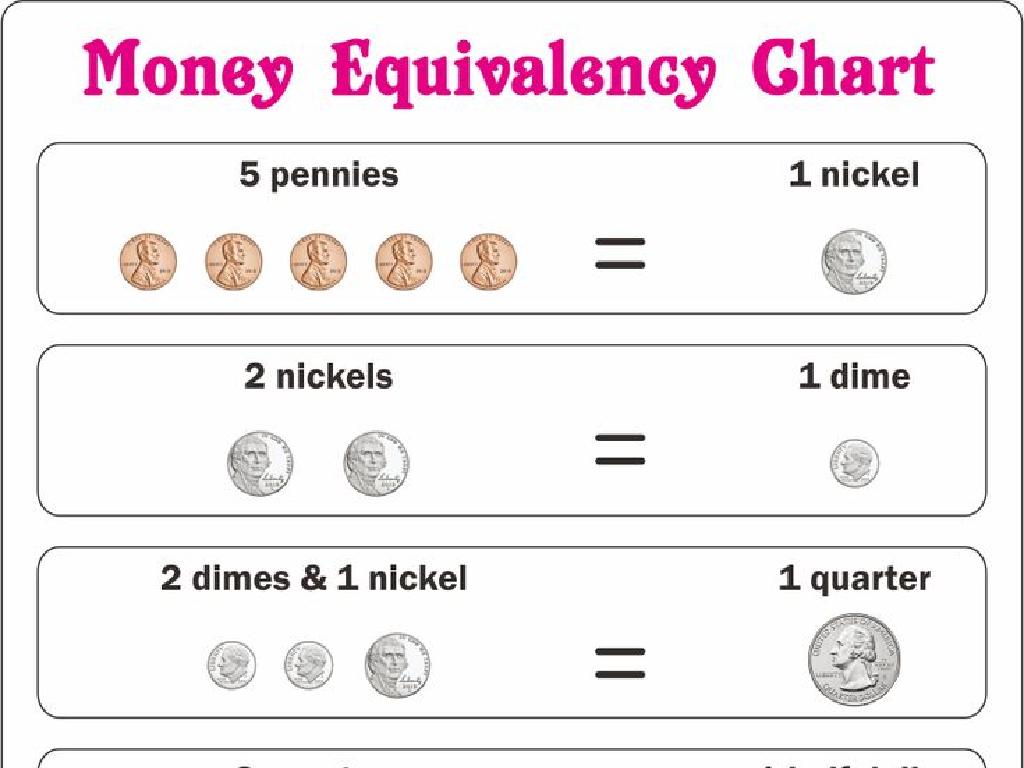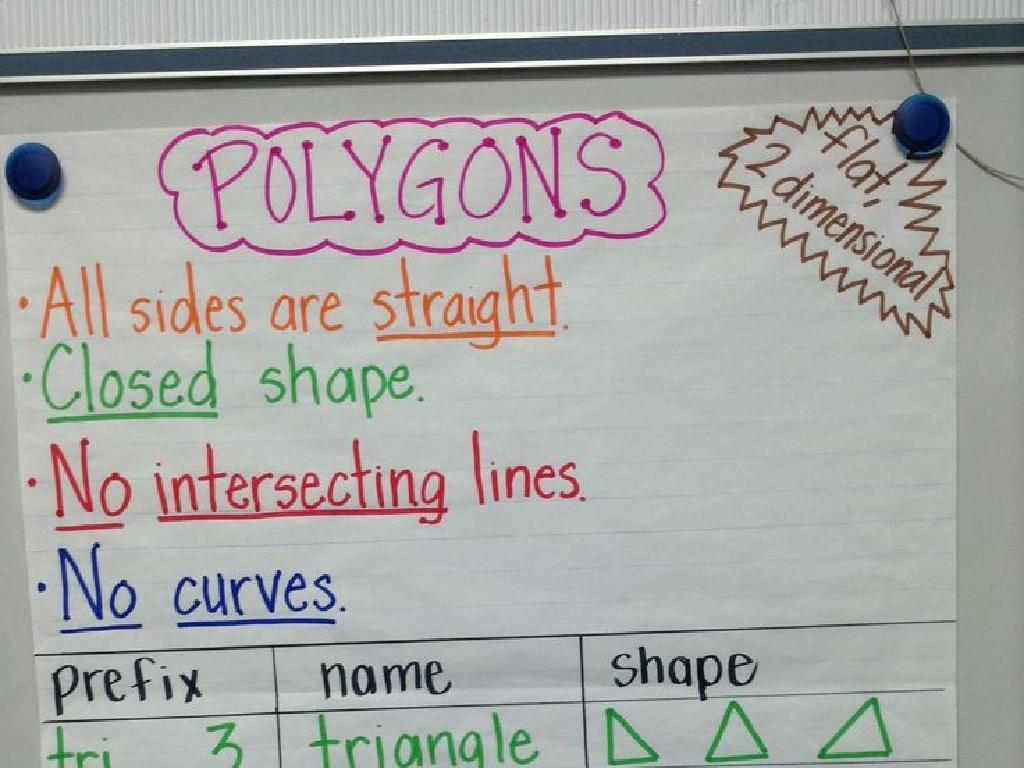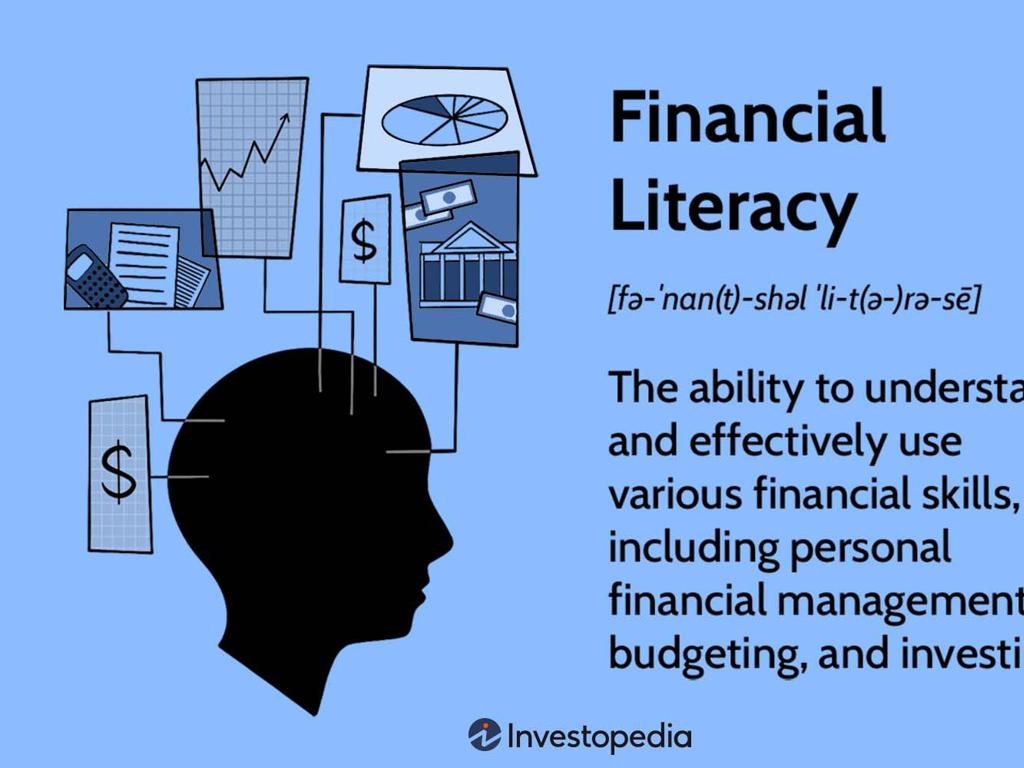Show Numbers On Ten Frames - Up To 20
Subject: Math
Grade: Kindergarten
Topic: Counting To 20
Please LOG IN to download the presentation. Access is available to registered users only.
View More Content
Welcome to Counting with Ten Frames!
– Greet our young mathematicians
– Ten frames help us count numbers
– A ten frame is a 2×5 grid for counting
– Let’s count together up to 20
– We’ll fill the frames with dots up to 20
– Practice makes perfect
– We’ll try counting with ten frames several times
|
This slide is designed to introduce Kindergarten students to the concept of counting using ten frames. Start by greeting the students warmly to create an engaging learning environment. Explain that ten frames are tools that help us visualize numbers and make counting easier. Encourage the students to count along with you, using the ten frames to count up to 20. Use physical ten frames or visual aids if possible to demonstrate. The repetition of counting with ten frames will help solidify their understanding of numbers and counting sequences. Make sure to provide positive reinforcement as they practice this new skill.
Understanding Ten Frames
– Ten frames help us count
– Two rows of five boxes
– Imagine 5 apples on the top, 5 on the bottom
– Fill in to show numbers
– One box filled equals one unit
– Practice with numbers up to 20
– Use two ten frames for numbers 11-20
|
Introduce the concept of a ten frame as a visual tool to help kindergarteners understand counting and number patterns. Explain that a ten frame has two rows with five boxes in each, which helps in visualizing numbers up to 10. Demonstrate how to fill the boxes with objects or drawings to represent numbers. For numbers beyond 10 and up to 20, show how to use a second ten frame to continue counting. Provide examples and encourage students to draw or use physical ten frames to practice this concept.
Learning Number 1 with Ten Frames
– Starting with number 1
– Place one counter in ten frame
– A ten frame has 10 boxes, fill the first one
– Observe the single counter
– Look at the ten frame, notice the one counter
– Understanding the concept of ‘one’
|
This slide introduces the concept of the number 1 using a ten frame, which is a tool that helps children visualize numbers and counting. Start by explaining what a ten frame is: a rectangle divided into 10 equal sections. Then, demonstrate placing one counter in the first box of the ten frame. Ask the children if they can see the one counter in the box to ensure they are following along. Emphasize that the number 1 is represented by a single object or counter in one section of the ten frame. This visual representation helps children understand the value of the number and its position in the sequence of counting. Encourage the children to draw their own ten frame and place one object in the first box to reinforce the concept.
Counting Up to 5 with Ten Frames
– Fill boxes to count to 5
– One counter per box
– Count out loud together
– 1, 2, 3, 4, 5 as we place counters
– Visualize numbers on ten frames
– See how 5 looks on a ten frame
|
This slide is designed to help Kindergarten students understand the concept of counting to 5 using ten frames. Start by explaining that each box on the ten frame represents one unit. As you place a counter in each box, encourage the students to count out loud from 1 to 5. This visual and interactive method helps solidify their understanding of number quantities and the one-to-one correspondence between counters and numbers. Make sure to go slowly, allowing the students to see and process each step. After completing the ten frame up to 5, ask the students to describe what they see and how many counters are on the ten frame. This activity sets the foundation for further counting and mathematical concepts.
Understanding Full Ten Frames
– A full ten frame visual
– Ten counters represent 10
Ten small circles in two rows of five show us the number 10.
– Counting together to 10
We’ll point and count each counter: 1, 2, 3, … up to 10.
– Recognizing the number 10
Seeing a full ten frame helps us remember what 10 looks like.
|
This slide introduces the concept of a full ten frame to the students, which is a foundational tool in understanding numbers up to 20. A full ten frame has 10 counters, and it’s important for the students to visualize what the number 10 looks like in this context. Engage the class by counting the counters on the ten frame together, reinforcing the concept of counting to 10. This activity will help students in recognizing and remembering the number 10 as a whole unit, which is crucial for developing number sense and for future math skills such as addition and subtraction. Encourage the students to draw their own ten frames and fill them with 10 counters to solidify their understanding.
Counting Beyond 10 with Ten Frames
– Counting past 10: use more frames
– Each ten frame holds 10 items
– Imagine 10 apples in one box
– Add a second frame for numbers 11-20
– For 11, start filling the next box
– Let’s count to 15 together
– We’ll place 5 more dots to reach 15
|
This slide introduces the concept of counting beyond 10 using ten frames, a visual tool to help Kindergarten students understand numbers and counting. Start by explaining that a single ten frame can only hold 10 items, just like a box can hold 10 apples. When we need to count more than 10, we simply add another ten frame. Demonstrate counting to 15 by filling one ten frame completely and adding five more dots to the second frame. Encourage students to visualize the frames and use objects like counters or drawings to practice. This hands-on activity will help solidify their understanding of numbers 11-20.
Counting to 20 with Ten Frames
– Two full ten frames equal 20
– Let’s count from 1 to 20 together
– We’ll count each spot on the frames until we reach 20
– Counting practice helps us learn
– Practice makes perfect in counting
– You’re doing great, keep it up!
|
This slide is designed to help Kindergarten students visualize the number 20 using two full ten frames. Begin by showing the students what a ten frame looks like and how it represents numbers up to 10. Then, introduce a second ten frame to illustrate how two ten frames can be used together to count up to 20. Encourage the students to count aloud as a group from 1 to 20, pointing to each spot on the ten frames as they go. Praise their efforts to build confidence. As an activity, you can have students fill in their own ten frames with counters or draw dots in each frame as they count. This visual and interactive approach helps solidify their understanding of numbers and counting sequences.
Let’s Practice Together with Ten Frames!
– Show numbers using ten frames
– Listen to the number I say
– Fill the ten frame to match
– Use counters or drawings to represent the number
– Ready to demonstrate your skills?
|
This slide is designed for an interactive class activity to reinforce the concept of representing numbers on ten frames. The teacher will call out a number, and the students will use physical counters or draw dots in their ten frames to match the number said. This activity helps students visualize numbers and understand the concept of ten as a base. The teacher should prepare different numbers to call out and ensure that each student has a ten frame and counters or a drawing tool ready. Possible variations of the activity could include asking students to show the number that comes after a given number, or the number that is one less, to incorporate simple addition and subtraction practice.
Class Activity: Ten Frame Fun
– Play a game with ten frames
– Each student gets a ten frame and counters
– Teacher calls out a number
– Show the number on your ten frame!
For example, if I say ‘5’, place 5 counters on the ten frame.
|
This interactive activity is designed to help Kindergarten students visualize numbers using ten frames. Distribute a ten frame and a set of counters to each student. Explain that a ten frame is a tool that helps us count by ones and tens. As you call out numbers up to 20, students will place the corresponding number of counters on their ten frames. This exercise will aid in number recognition and understanding the concept of place value. Possible variations of the activity include: asking students to fill the ten frame to match the number called, having students determine how many more counters are needed to make ten, or letting students take turns calling out numbers for their peers to represent.






